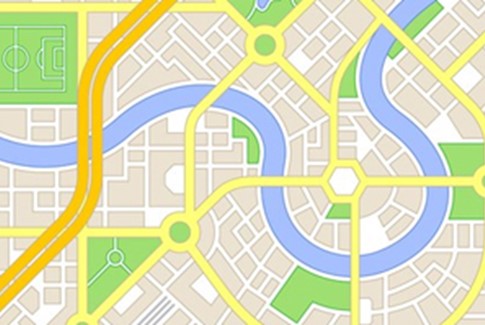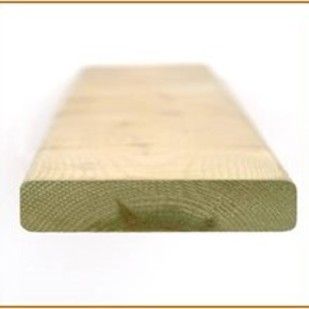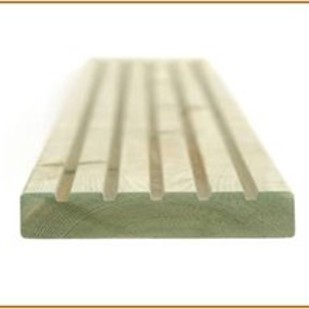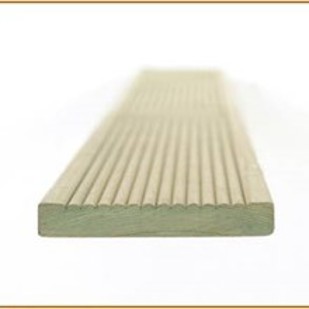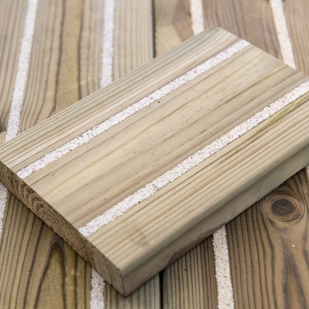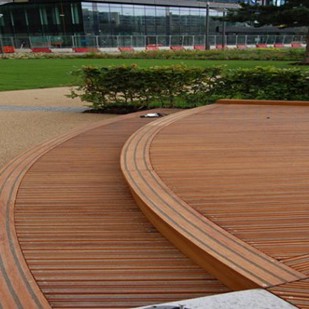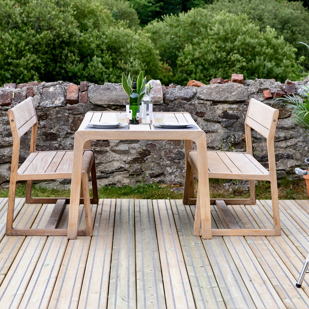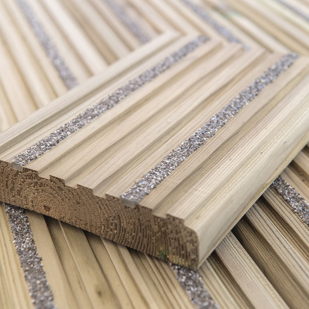Timber Deck Board Options
Timber deck boards are typically supplied in long lengths, from 1.8m to 6.0m and are rectangular in section, ranging from 19 - 45mm thick and 70 - 145mm* wide.
Profiles
The two significant choices of board profile in the UK are smooth (plain) and grooved (ribbed is also an option).
- Grooved boards do not give any additional resistance to slip, they are designed to channel water away from the deck. As such they must always be laid in the direction of the fall and kept clear of debris otherwise standing water may encourage algal growth which creates a slip risk if not dealt with by cleaning.
Generally all deck board edges are either chamfered or pencil rounded or eased for the purpose of shedding water and minimising the likelihood of edges splintering if subject to impact.
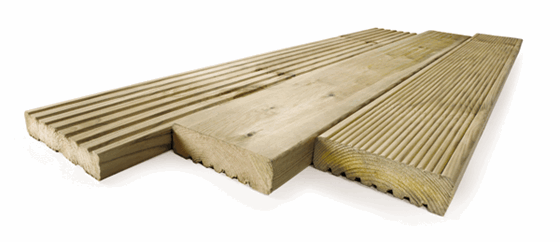
Purpose made, dual sided boards – smooth one side and grooved the other or differing grooved patterns on either side, are common and have been on the market for years. They give the buyer the option of grooved side up or down – it’s a preference.
From left to right, examples of smooth, grooved and ribbed deck board profile types.
Enhanced grip boards with inserts of anti-slip material (in both smooth and grooved profiles), for use in areas where improved slip resistance is required – e.g. steps, ramps and key areas of decks and walkways for public access – are widely available in a variety of colours and patterns.
DeckMark® Plus is a quality and performance rating scheme for these type of boards. It identifies enhanced grip boards that have been independently tested for slip resistance to UK Slip Resistance Group guidelines and British Standard BS 7976-3:2002+A1: 2013.
For specific performance ratings contact the manufacturers.
Drainage, movement and the seasons
*To enable fast drainage and reduce the effects of movement caused by moisture content, the TDCA does not recommend using any board wider than 150mm.
The wood should be straight grained and have a moisture content no greater than 20% to reduce the risk of distortion caused when timber with higher moisture levels dries to suit the local conditions.
As an aid to drainage, a positive fall should be built into the deck structure. If the deck is attached to a property then the fall should be away from the building.
A gap of no less than 5mm and no more than 8mm should be left between boards to allow for the natural movement of timber over the seasons and help surface drainage and ventilation of the entire structure. Leave a gap of 5mm where a deckboard abuts a post and no more than 2mm where deckboards abut one another lengthways.
Find a supplier of deck boards
GO TO SUPPLIERS